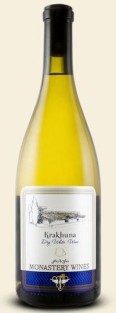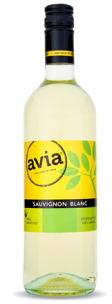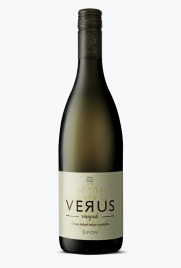Note: Following is a favorite post from 2014.
Eastern European blood runs through both members of VinoDuo’s veins, though it’s more Jewish shtetl than rolling vineyards. So when Lisa saw that a handful of winemakers from the old country were exhibiting at the Boston Wine Expo 2014, she made a beeline for their tables and never left. Nothing like discovering an entirely new wine region to make a blogger grin, purple tongue and all.
GEORGIA
First stop was Georgia, in the Caucasus region. Apparently Georgia is the Old, Old World wine region, calling itself the first wine producing country in the world. With 7,000 years of winemaking history, the Georgians have had plenty of time to hone their craft. And despite agricultural and geopolitical catastrophes in the recent past, the wine presented by Khareba Winery was, on the whole delightful. But with no U.S. distributor, Khareba’s wines aren’t yet available stateside. If you want to sip Lisa’s favorites, you’ll have to go to Tbilisi.
 Khareba produces its 20+ wines in two distinct geographic regions—Kakheti in the East and Imereti in the West—using both ancient and modern winemaking styles. The traditional Georgian method of winemaking uses a qvevri, a large, egg-shaped clay vessel lined with beeswax and buried in the ground, for fermentation, maceration and storage of wine. These skin-fermented white wines have become something of a fad in U.S. winebars, where they’re marketed as “orange wines.” In Georgia, they’re just called “wine.”
Khareba produces its 20+ wines in two distinct geographic regions—Kakheti in the East and Imereti in the West—using both ancient and modern winemaking styles. The traditional Georgian method of winemaking uses a qvevri, a large, egg-shaped clay vessel lined with beeswax and buried in the ground, for fermentation, maceration and storage of wine. These skin-fermented white wines have become something of a fad in U.S. winebars, where they’re marketed as “orange wines.” In Georgia, they’re just called “wine.”
What to Drink
Lisa sampled a mish-mash of Khareba wines from the East and West, using the ancient method and the modern European style. Her favorites crossed geography, methodology, and grape.
Whites
- Krakhuna Monastary Wine – a dry white wine from the Western region; fermented and aged for 8 months in Amphora (Qvevri) with 5% of its skins. Far from being “orange” the Krakhuna (name of the grape) produced in the West of the country is a delicate light color, with a lovely floral nose and limestone on the palate. Full-bodied and bone dry, sedate; not a sipping wine.
- Krakhuna 2013 – Same grape, same region, different method (stainless tanks). Totally different profile. Pale and dry but a lively palate, nice citrus tones. A great “deck wine.”
- Rkatsiteli 2013 – From the East comes this wine in production since 1892. Made in the European style the Rkatsiteli (grape name) was light, almost transparent but full of flavor. Floral nose and dry as a bone. Great with fish. Interestingly, the Rkatsiteli Monastary 2011 made in the qvevri style was bitter, with less flavor.
Reds
- Saperavi 2011 – A dry red wine from the East, the Saperavi (grape name) was a beautiful deep cherry color and bursting with red fruit aromas.
- Saperavi Chateau Marko 2010 – Billed by Khareba’s rep as “Stalin’s favorite wine” [note to Khareba marketers: Stalin is not a come-on in the USA] the Chateau Marko is made in the European style, with both aged (20% in French oak) and un-aged grapes. Dry and smooth, with good balance. I’d serve it with a lamb stew if Stalin were coming for dinner.
SLOVENIA
While not exactly part of our Zaydes’ “old country,” Slovenia is in Eastern Europe—and a winemaking country on the move. Independent since the 1991 breakup of Yugoslavia, Slovenia borders Italy to the west, Austria to the north, Hungary to the east, and Croatia to the south. Slovenian lore claims that winemaking began there in the 4th century BC and it was Slovenians…not Georgians…who first made wine. Let them duke it out. At least they’re fighting about wine, not religion.
At the Boston Wine Expo, a delightful rep. from Laureate Imports Co., a Georgia- (not Georgian) based importer, presented two Slovenian brands, Avia and Colliano. Both wineries are situated in Goriska Brda, the western-most wine region bordering Italy, and share Italy’s topography and Mediterranean climate. Avia and Colliano are both value-priced wines, with no bottle priced above $15 and many coming in under $7 on US shelves.
What to Drink
 White wine dominates Slovenian production. Lisa sampled two each from Colliano and Avia and found them all too sweet for her taste. If your palate favors sweet, here are two pleasing wines to try.
White wine dominates Slovenian production. Lisa sampled two each from Colliano and Avia and found them all too sweet for her taste. If your palate favors sweet, here are two pleasing wines to try.
- Avia Sauvignon Blanc 2011 – Light, pale color that looks like a Sauvignon Blanc but tasted more like an unoaked Chardonnay. $6/bottle Note: The 2011 is still available for $9; the 2012 is $6…going down?
- Colliano Ribolla Gialla – Grape is native to the Italy/Slovenia border region; light golden color, citrus and soft fruit on the palate. Might be a fun deck wine on a hot summer day. $14/bottle
 Slovenia Footnote
Slovenia Footnote
We just picked up a bottle of Verus Vineyards Sauvignon Blanc 2013. Light, almost fizzy wine with a hint of citrus and some stone fruit. Good minerality (if you like minerality, which Lisa does and Gary doesn’t.) Far more interesting than the Avia SB and, at $14, worth the doubling of price.
